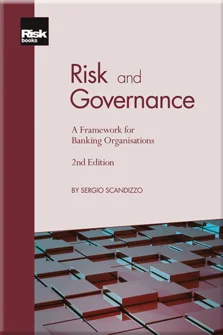Risk Management and the Role of Culture
Introduction: The Confluence of Risk and Governance
Corporate Governance, Information and Control
The Nature of Corporate Governance in Banking
Regulation and Governance
The Centrality of Risk Management
The Mission, Organisation and Governance of Risk Management
A Cartography of Banking Risks
Operations Risk in Extreme Market Conditions
Managing Legal Risk
Managing Reputation Risk
Drawing Boards: Motivations and Responsibilities in the Boardroom
Executive Compensation: Performance, Regulation and Ethics
Fair Value, Auditing and Internal Controls
Risk Management and the Role of Culture
The Board of Directors
Compensation
Auditing, Reporting and Disclosure
We will now explore the conclusions of previous chapters and discuss the structure of a governance framework that, although in theory applicable to any large financial institution, could be especially well-suited for global systemically important banks. The approach is based on the following principles.
-
- Corporate governance has two objectives – to ensure the long-term viability of the bank and to protect the interests of those who bear the risks generated by the bank’s actions (the bank’s stakeholders).
-
- The focus of a bank’s board of directors should be the understanding of its risk-taking and its risk management activities.
-
- This understanding should be the primary objective of a dedicated risk management function independent from the corporate hierarchy.
-
- Independent monitoring of management activities should be supplemented by a system of incentives that reward sustainable performance and protect the interests of stakeholders.
-
- External governance mechanisms should be designed to minimise conflicts of interest and have the aim of enhancing the understanding of risk-taking and risk management activities, and of
Copyright Infopro Digital Limited. All rights reserved.
As outlined in our terms and conditions, https://www.infopro-digital.com/terms-and-conditions/subscriptions/ (point 2.4), printing is limited to a single copy.
If you would like to purchase additional rights please email info@risk.net
Copyright Infopro Digital Limited. All rights reserved.
You may share this content using our article tools. As outlined in our terms and conditions, https://www.infopro-digital.com/terms-and-conditions/subscriptions/ (clause 2.4), an Authorised User may only make one copy of the materials for their own personal use. You must also comply with the restrictions in clause 2.5.
If you would like to purchase additional rights please email info@risk.net











